Insect declines in Germany: can insect-friendly farming practices help reverse the trend?
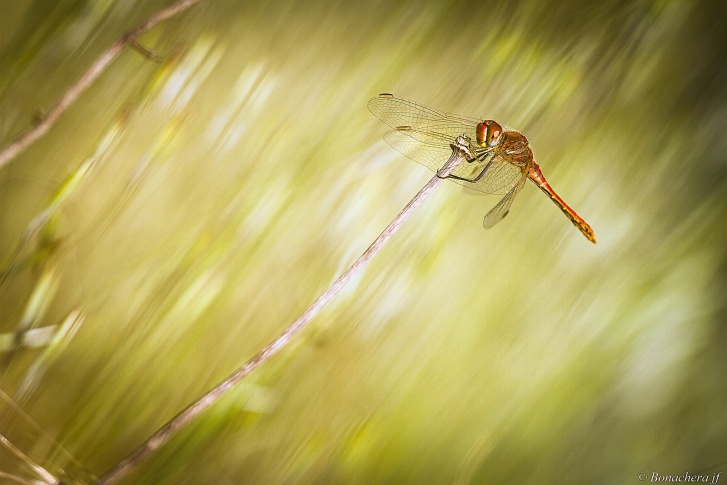
A dragonfly holds tight to vegetation in strong wind. Dragonfly populations are declining across Europe. Image: Jean François Bonachera | Flickr Creative Commons
Insect conservation is currently a hot topic in Germany. A succession of scientific studies have documented insect population declines across species and habitats in recent years, a trend which is gaining increasing public and political attention. As is the case with global concerns over insect declines, the big question is: what can be done to reverse these negative trends?
Scientists document insect declines across Germany
A 2017 study found that flying insect biomass in Germany has dropped by 76% over the last 27 years. Researchers collected flying insects across different habitats within protected areas in lowland western Germany using mesh tent traps. They noticed a steep decline in insect biomass (the total weight of insects caught) in recent years, particularly around midsummer, where biomass has dropped by 82%. Writing in the journal PLOS ONE, Caspar Hallmann and colleagues attribute the declines (in part) to agricultural intensification, particularly intensive fertiliser and pesticide use, and habitat loss. Another PLOS ONE study in 2013 documented how the leaching of neonicotinoids (a common agricultural insecticide, linked to insect declines globally) led to significant declines in aquatic insect abundance. Many flying insects (such as dragonflies and damselflies) have significant aquatic phases in their life cycles, and water pollution is thus a key stressor on wider insect populations.
Another German study found that light pollution can be a cause of insect declines. Scientists from the Leibniz-Institute of Freshwater Ecology and Inland Fisheries (IGB) suggest that climate change, pesticides and land use changes alone cannot fully explain the decline in insect populations in Germany. “Half of all insect species are nocturnal. As such, they depend on darkness and natural light from the moon and stars for orientation and movement or to escape from predators, and to go about their nightly tasks of seeking food and reproducing,” explains Dr. Maja Grubisic, lead author of the 2018 study in Annals of Applied Biology. “An artificially lit night disturbs this natural behaviour – and has a negative impact on their chances of survival.” The researchers identify light pollution as an emerging stressor for insect populations, particularly in agricultural landscapes. They argue that light pollution should thus be considered as part of environmental conservation approaches designed to protect insect populations.
Earlier this month, a study found that over half of the c.500 wild bee species found in Germany are at risk of extinction, or already locally extinct – a trend driven by intensive agricultural practices. Researchers from the Ludwig-Maximilians-Universitaet (LMU) found that bee species which emerge in late summer struggle to find sufficient food in intensive agricultural landscapes. “According to our analysis, late-emerging species – Melitta tricincta, for instance – are increasingly at risk in agricultural areas, because they can no longer find sufficient food,” says Prof. Susanne Renner, lead author of the study. “In regions where the land is intensively farmed, the fields are virtually devoid of flowers at that time of the year. Bees that emerge in the spring can at least count on the availability of plants such as oilseed rape and the presence of blooming orchards.”
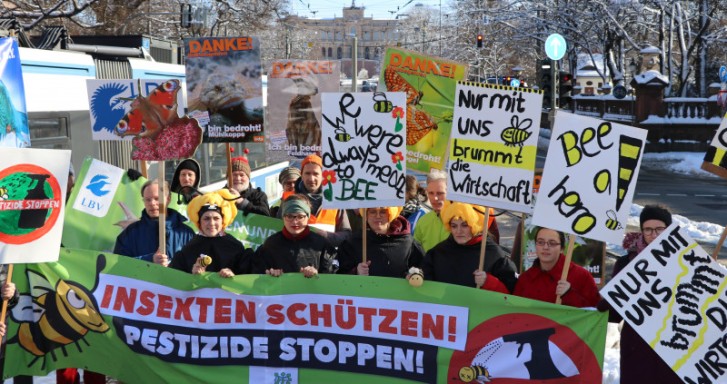
Supporters of the ‘Save the Bees’ campaign in Bavaria, Germany. Image: Friends of the Earth
Public and political appetite for positive change
Awareness of such insect declines has reached public and political realms recently. Last month, environmental groups behind the ‘Save the Bees’ campaign in Bavaria, southern Germany secured the signatures of around 1.75 million people (nearly 20% of eligible Bavarian voters) in a petition to radically improve the environmental impacts of farming methods in the state. The petition asks that 20% of land is made ‘bee-friendly’ by 2025, and 30% by 2030. This shift could be made possible by a shift to more organic farming approaches, campaigners suggest. The petition states that 10% of green spaces in Bavaria should be turned into insect-friendly flowering meadows, and that rivers and streams should be buffered from pesticides and fertilisers through the protection of riparian strips of natural vegetation along their banks.
The ‘Save the Bees’ campaign – which involved a series of high-profile, carnival-like protests in the run-up to the petition deadline – is designed to change and strengthen the existing Bavarian Nature Conservation Act. But the ‘Save the Bees’ campaign is not just about bees. Last month, Agnes Becker, the leader of the Bavarian Ecological Democratic Party (ÖDP), which backed the petition, told a television debate, “It’s not so much about the honey bee as it is about a very long and ever-growing list of threatened species of animals and plants, but the bee is our mascot, our symbol.”
The referendum result has prompted a series of round-table meetings between the environmental groups behind the petition, and the Bavarian Farmers Association which contests some of the proposed measures. The Association argues that the petition’s demands of de-intensified farming methods are restrictive and unworkable. The latest round-table, held last week, prompted four working groups – ‘agricultural landscapes’, ‘forest’, ‘waters’ and ‘settlements/urban areas’ – to be established whilst the state parliament decides whether to enforce the petition demands in law.
Meanwhile, the Social Democrat (SPD) Minister for the Environment Svenja Schulze has proposed an ‘action plan for insect protection’ across the whole of Germany. The action plan, which was originally proposed to the German cabinet in October 2018, is under consultation, and could mobilise €100 million of funding each year for insect conservation in Germany. Schulze says, “Stopping the decline of insects is a key political task of our time.” Depending on the progression of negotiations, the action plan could be adopted by the government as early as next month.

Bees are important pollinators of flowers and crops. Image: BrambleJungle | Flickr Creative Commons
Could ‘insect-friendly’ agriculture halt insect population declines?
What these scientific findings and political debates have in common is a concern with making German agricultural practices more ‘insect-friendly’. Insects, of course, provide important ecosystem services, particularly pollination, in many agricultural landscapes. The German Association for Environmental Protection and Conservation (BUND) estimates that the economic value of the pollination services provided annually by insects in Europe is more than 14 billion euros.
A key question, then, is how to balance insect conservation (and that of biodiversity more widely) with the economic and food security concerns of modern agricultural production? Are shifts to lower-intensity, organic-led farming approaches – as advocated by the ’Save the Bees’ campaign – realistic in practice?
A recent policy report from the Ten Years For Agroecology (TYFA) project suggests that they might – but that such a shift requires significant changes to public eating habits. Published in September 2018, the TYFA report uses computer modelling to explore the possibilities of ana Europe ‘agro-ecological’ food system for 2050. An agro-ecological system is based on “abandoning pesticides and synthetic fertilisers and redeploying extensive grasslands and landscape infrastructures,” in order to protect biodiversity and mitigate climate change effects, whilst still providing sustainable food sources for European populations.
Authors Xavier Poux and Pierre-Marie Aubert report that whilst such agro-ecological measures would likely lead to a decline in agricultural production of around 35% across Europe, this would not be an issue if public eating habits shifted away from meat towards plant-based diets. They suggest that whilst such a scenario represents a ‘utopia’, their study shows that it is possible to reduce agricultural carbon footprints and restore healthy natural environments, whilst feeding European people healthily. In other words, whilst their vision is unlikely to be played out in practice, perhaps alternative approaches to European agricultural practices are realistic, if there is sufficient public and political will.
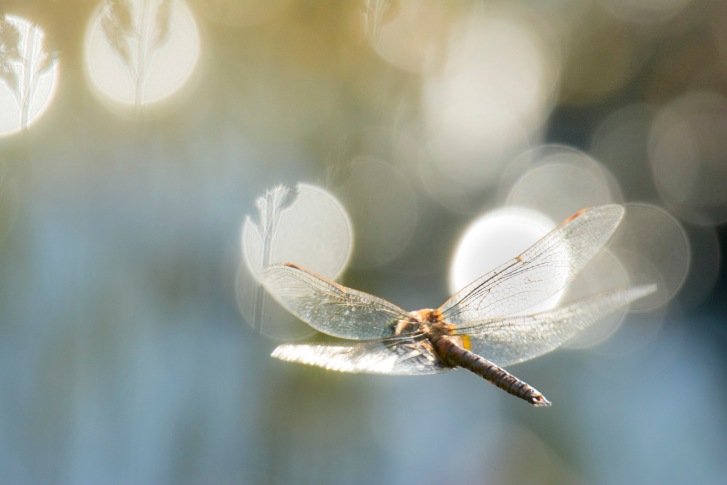
Sympetrum dragonfly in flight: aquatic ecosystems are important for many flying insect populations. Image: Artur Rydzewski | Flickr Creative Commons
The wider landscape: what about aquatic environments?
What do these issues and debates have to do with aquatic environments? In short: a lot. As noted before, many flying insects have significant aquatic stages (e.g. as larvae), and often require high water quality to successfully hatch. More broadly, terrestrial and aquatic environments are inherently linked across wider landscapes, and biodiversity losses on land are often accompanied by parallel losses in water, which can happen at a great rate and magnitude. The EU MARS project found that the impacts of intensive agriculture – pollution, habitat loss and fragmentation, water abstraction – can are often some of the most important stressors on aquatic ecosystems.
As aquatic scientist Dr Sebastian Birk from the University of Duisburg-Essen puts it, “The bigger issue is ‘how do we want to live in the future’?’ Insect declines and aquatic ecosystem degradation are just indicators of how we treat our natural environments. Ultimately, pollutants often end up in the gutter, and then our rivers and lakes. So what you do on the land will affect the waters, too.”
We will continue to follow the developments in Germany and report back over the coming months.








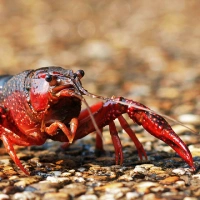





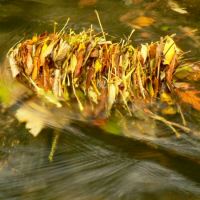
Comments are closed.